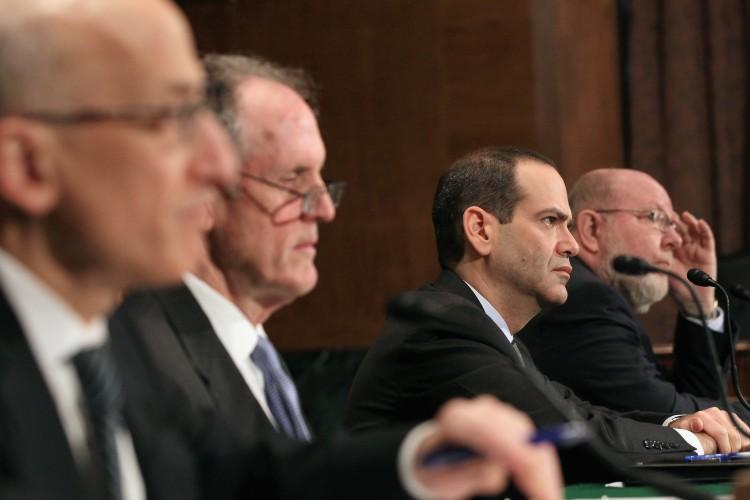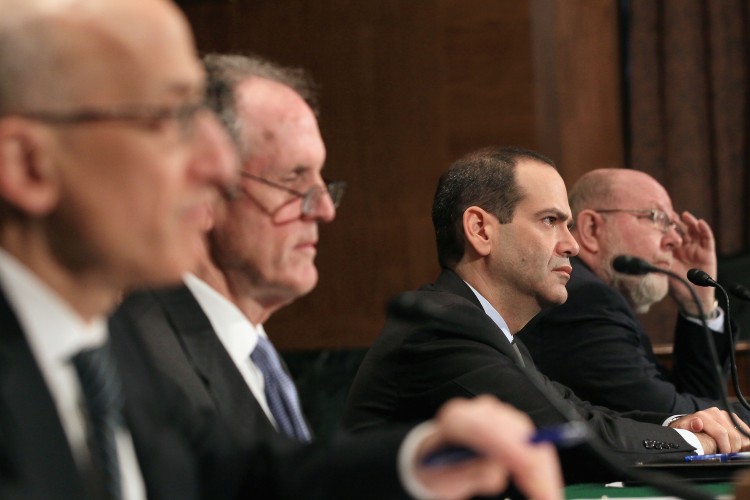The Special Inspector General for the Troubled Asset Relief Program (SIGTARP), the supervisory body for investments held or guaranteed by the U.S. Treasury, was established under the Economic Stabilization Act of 2008, with the first Special Inspector General Neil Barofsky sworn into office on Dec. 15, 2008.
“SIGTARP has an unwavering commitment to protect taxpayers who funded TARP. SIGTARP has conducted oversight of TARP funds and has promoted transparency related to TARP through 13 quarterly reports and 17 audits and evaluations,” stated the latest SIGTARP Quarterly Report, published on Jan. 26.
On inception, the Troubled Assets Relief Program (TARP) was heralded as the savior of the U.S. economy, by some for infusing over $400 billion into the economy, and by others as a program for government support of corporations that are considered too big to fail, the survival of which should have been left to market forces.
SIGTARP will exist at least until or beyond 2017 or at least as long as the U.S. Treasury retains investments in corporations or banks or guarantees payment of defaulted loans related to the 2008 financial upheaval.
“TARP morphed beyond a bank bailout into 13 programs, some of which are scheduled to last until as late as 2017,” according to the quarterly report.
Bailout Principle Setting Dangerous Precedent
“The implicit guarantee that came from the Government’s unprecedented intervention resulted in moral hazard, and companies continue to engage in risky behavior,” the quarterly report said.
SIGTARP, and not only SIGTARP, but many academics and economists, pointed out that the bailout of the U.S. financial sector and certain corporations by the U.S government sets a dangerous precedent, as it provides an implicit guarantee for future bailouts, providing these entities with an incentive to take risks far above what is acceptable, risks they wouldn’t take without such a guarantee.
The crux of the matter is that America no longer adheres to a true capitalistic theory, one that requires free entry or exit into or out of the market, is governed by the law of supply and demand, and not subject to government interference.
Corporations and financial institutions are allowed to grow into gigantic entities, which if they should fail, could create an environment that is no longer able to sustain the economy, thus bringing the theory too big to fail to life.
“Classical economists understood the dangers of large corporate organizations: they inevitably tend toward monopoly. ... If bigness in [sic]truly necessary, these corporations need to become government agencies. If not, they need to be made smaller,” according to an article by John E. Ikerd, professor emeritus of agricultural economics at the University of Missouri.
Secondly, the too big to fail theory brought with it not just the implicit promise of a government bailout if a corporation takes unsustainable market risks, but also the risk of runaway executive compensation packages, which foster, instead of reigning in, excessive risk taking, as SIGTARP points out.
“Because companies generally have shown little or no appetite for reforming executive compensation practices, the economy remains at risk that compensation could play a material role in the event of a future crisis,” the SIGTARP report said.
SIGTARP staff expressed concern about the new regulations under the Dodd-Frank Act (Dodd-Frank Wall Street Reform and Consumer Protection Act), as they are in their infancy and still under development. These regulations may not have gone far enough to reign in excessive risk taking and have not yet demonstrated that they are an effective tool against it.
“All of the regulations required under the Dodd-Frank Act are not final and their effectiveness remains to be seen. ... Taxpayers are looking to the regulators to protect them and to help reinforce the stability of the largest firms and the financial system so that history does not repeat itself,” the SIGTARP report states.
Next...TARP’s Financial Aspects
TARP’s Financial Aspects
“TARP investment authority expired on October 3, 2010, no new obligations may be made with TARP funds. However, dollars that have already been obligated to existing programs may still be expended,” according to the SIGTARP report.
By Dec. 31, 2011, the U.S. Treasury had agreed to pay out $474.8 billion under 13 TARP programs. As of date, $413.8 billion has been distributed, and $51 billion is available, with $42.6 billion earmarked under the Housing Support Program. The remaining $8.4 billion is available under the Public-Private Investment Program and Term Asset-Backed Securities Loan Facility in equal amounts.
As of the end of last year, 282 of those that received TARP funds, have made good on the principal or bought back the shares that were held by the U.S. Treasury, to a total of $277.9 billion. At the same time, the U.S. federal government had to write off $4.2 billon and reported losses of $7.8 billion, leaving $121 billion to be paid.
The program losses were offset by interest and dividend payments and sale of warrants, totaling $40.3 billion at the end of 2011, with $377 million of interest payments in default. Warrants give the government the right to purchase stock in banks at fair market value. However, fair market value is difficult to assess, and so no one knows if the warrants are sold at a less than market value rate.
Different estimates of the cost of the program have been published by different government agencies. In June 2011, the Office of Management and Budget assessed a cost of $53 billion after having estimated a $341 billion loss in 2009. Treasury suggested a $70 billion lifetime loss in November 2011. The Congressional Budget Office suggested in December 2011 that the total cost to the U.S. government would not exceed $34 billion.
Estimates of the total cost may change, as no one can truly predict the market prices of common stock. But, the majority of losses will come from the government’s housing program, the AIG bailout, and the automotive sector.
Quoting Treasury, the SIGTARP report stated that “costs fluctuate in large part due to changes in the market prices of common stock for AIG and GM and the estimated value of the Ally stock.”
Watchdog Activities
“SIGTARP is a highly sophisticated white-collar law enforcement agency. As of December 31, 2011, SIGTARP had more than 150 ongoing criminal and civil investigations, many in partnership with other law enforcement agencies in order to leverage resources throughout the Government,” according to the SIGTARP report.
SIGTARP not only investigates and goes after fraud perpetrated since the program was established, but also fraud that predated TARP and was responsible for the financial crash.
As of December 2011, 61 individuals have been prosecuted with 31 criminally convicted. For example, Lee Farkas, former chairman of Taylor, Bean & Whitaker, was given a 30-year prison sentence. Prison sentences handed down have ranged from 3 months to 30 years.
During the last quarter of 2011, SIGTARP went after fraudulent Internet advertising and has closed down several hundreds of such sites.
“SIGTARP and its law enforcement partners are ensuring that justice is served,” the SIGTARP quarterly report stated.






